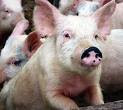the Artisan hams from spain
Picture paper-thin strips of dark red ham like petals ringing a hand painted plate. Imagine big honest hams curing in the mountain air. Picture individual hams resting on stands in family kitchens throughout Spain with a long slim knife at hand for any and all to slice a treat.
In Spain, Jamón is hospitality and reflects our way of welcome people to enjoy our country.
There exist two great traditions of artisanal cured hams in Spain, both of which are tasty and nutritious, and the source of great pride among Spaniards:
Jamon Serrano is a cured country ham from white pigs. From time immemorial in the mountains of Spain, country people have rolled fresh hams in sea salt and hung them from their rafters to cure. A year to eighteen months later the jamones are ready to mount on special stands that are designed so that anyone can stop by, carve a few paper-thin slices, and enjoy an impromptu snack - perhaps with some manchego cheese.
Today, Jamon Serrano comprises about 90% of Spain's annual ham production. These hams are produced mostly by recreating the effect of traditional techniques in modern production facilities, from white pigs raised mostly on cereal grains. The hams are made from Duroc, Pietrain, Landrace or other large white pigs, which flourish throughout Europe. When compared to hams processed in other countries, however, Jamon Serrano is less moist with a consistent texture, some marbling, a purple color, and a deep ham flavor.
Jamón Ibérico is the pride of Spain. The lineage of the unique animals that produce these hams stretches back to pre-history when they ran wild in the Iberian Peninsula. Columbus had some of them on the Santa María when he set out to discover the New World. Our family, who founded Jamon.com, has been on a quest for the finest of all hams, Jamón Ibérico, since we started our business in 1996.
Jamon Ibérico is produced from Cerdo Ibérico, a pig native to Southwestern Spain and Southeastern Portugal. These pigs are much fatter and have more marbled meat than regular pink pigs. As opposed to their luckier Bellota destined bretheren, they are mostly fed cereal feeds, and may be allowed limited free range time where herbs supplement their diet.
Jamón Ibérico Bellota: a sub category of Jamón Ibérico where the pigs are free to roam the meadows of the 'dehesa'. During the autumn prior to their sacrifice, they are encouraged to gorge on acorns from the Holm oak and cork trees, sometimes gaining as much as a kilo of weight a day. Much of the resultant fat is mono-unsaturated.
Jamón Ibérico comprises only about 10% of Spain's annual ham production. Jamón Ibérico hams are aged from 24 to 36 months and have distinct marbling, a dark purple color, and an intense ham flavor coming from mono-unsaturated fat.
Labels: origins

